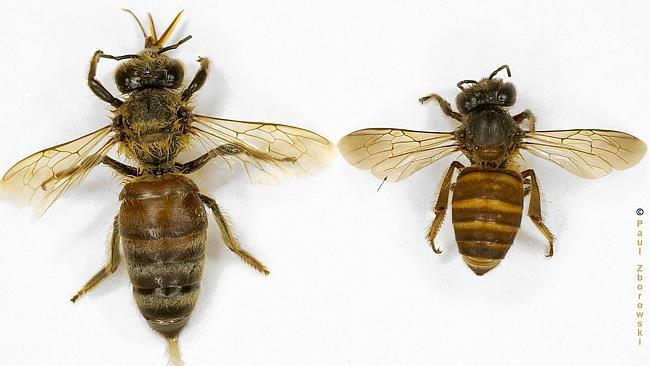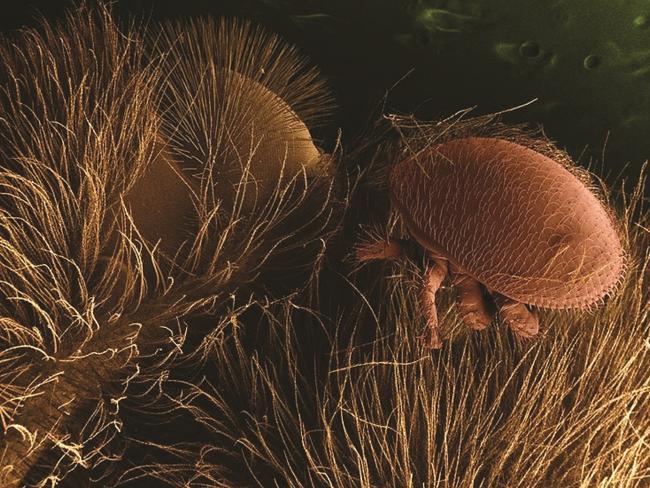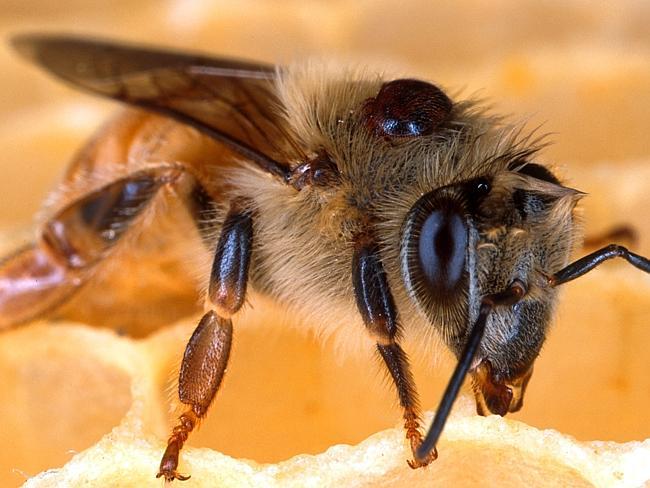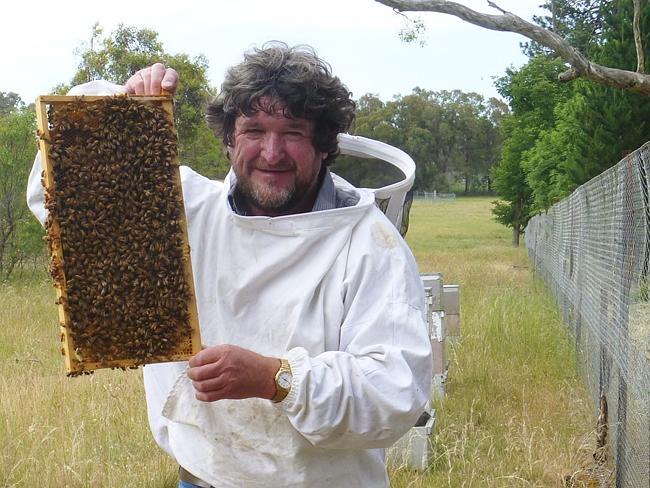A world without honey bees would not be a world at all
BEES. You may not realise it, but they’re crucial for our way of life. And they’re in serious danger of becoming extinct.

Outdoors
Don't miss out on the headlines from Outdoors. Followed categories will be added to My News.
IT’S an initiative which has the support of Nicole Trunfio, Pete Evans, Jodi Gordon, Ruby Rose, Shannan Ponton and Michelle Bridges, and it’s something we should all be concerned about.
Our bees are dying at a rapid rate.
Charles Darwin once said that “The life of man would be made extremely difficult if the bee disappeared.”
So it’s safe to say that Darwin, if he was still alive, would be more than a little concerned to know that over fifty per cent of the world’s honey bee population have died.
Why should you care? Because bees are responsible for pollinating 70 per cent of the world’s horticulture and agricultural crops, so without them we simply would not have fresh fruit and vegetables — in fact, we would all starve within five years, because nothing could be pollinated.
“European honey bees are our main pollinator of our commercial crops,” explains bee pathologist Dr Denis Anderson. “If you took the bee out of our agricultural system, we just could not compensate for the pollination that bees do for our crops, particularly fruit and vegetable crops. Stone fruits, cherries, plums, peaches …. they just wouldn’t be pollinated. Watermelon, rockmelon, cucumbers — all those sorts of crops require pollination. We’d have to come up with other systems of pollinations, but we are so dependent on honey bees for this role, we wouldn’t be able to do it quickly enough.”

Dr Anderson found international acclaim in the year 2000, when he discovered the deadly Varroa destructor mite. The mite is single-handedly responsible for killing off over 50 per cent of the world’s bee population.
“The mite is an external parasite. It’s rather large and you can easily see it with your eye — it would be about 5mm in size. It lives on the outside of the bee, and it sucks its blood.,” says Dr Anderson.
“Being a mite it doesn’t have eyes, so it gets itself around by recognising chemicals which float in the air. It knows where it is just from the smell of things. At the moment, the mite gets a chemical signal from the bee that it responds to in some way — it will either ignore it, or it will know instinctively that it can start laying eggs. And so, the mite reproduces,” he explains.

The plight of the honey bees is something Dr Anderson has devoted his life to - and it’s also something more and more Australians are realising the importance of. For example, Western Australia shoe company honeybees are donating $2 for every pair of shoes sold to raise money for further research into the European honey bee and the Varroa mite - this is the initiative that has the support of model Nicole Trunfio, chef Pete Evans, actress Jodi Gordon, presenter Ruby Rose and health gurus Shannan Ponton and Michelle Bridges.
“Jump on board,” says Evans. “We’re trying to raise a million dollars to save the honey bees — and being a chef, where will the world be without the bees? They’re responsible for a third of the food we have on our plates.”
Makes you think differently about the little guys, right?
History of the honey bee
Australia’s honey bees are currently healthy, but according to Dr Anderson, this has more to do with luck than good management. Bees travel in swarms, and it only takes one bee carrying one Varroa mite to land on a boat that docks on Australian shores for a colony to be infected - and history is our deadliest example.

In America prior to 1988 there were five million hived colonies. The mite arrived, and by 1993 that number had diminished to 2.5 million — and it’s been falling ever since.
Mites have been in Europe since the late 1970s, and the country’s feral bee population is now believed to be extinct. They have also lost about 40 per cent of their hived colonies.
Our neighbours in New Zealand became infected by the Varroa mite in 2000, and it is estimated that 30-35 per cent of hived colonies have been eradicated because of it.
“Most countries get that initial shock when the mite first arrives,” says Dr Anderson. “It has this ability to spread very quickly, and all of a sudden your feral bee population disappears, you notice your hives are not going as well as they should, and you realise it’s the mites.”
At the moment, the mite can be controlled by chemicals, but chemicals only work to a certain extent — and they’re no good if you’re trying to sell organic honey or organic fruit and vegetables.
“The mites gradually develop resistance against whatever chemical formula you come up with, and you get on this chemical treadmill,” says Dr Anderson. “So even though we’re using chemicals, the mites are still winning the race. In addition, there’s just no way we can get these chemicals to the feral bee colonies. So, we want to develop a bee that is totally resistant to the mite.”

Considering what we already know about the Varroa mite, developing a strain of bees that is resistant to it is not as impossible as it seems.
“The mite was originally a parasite of the Asian honey bee, which is closely related to the European honey bee,” explains Dr Anderson. “During the middle of last century humans introduced the European honey bee into Asia, because it is a much better honey hoarder and it’s a better pollinator.
“For some time European honey bees were invisible to the Varroa mite. But then, one female mite got lucky and registered some kind of chemical signal that she liked on a European honey bee.
“The mite then spread from this one bee onto the other bees, and when the colony was shipped, the mite travelled out of Asia with it. And so, we’re trying to figure out what that initial signal was that the mite recognised. Once we can figure that out, there’s a good chance we can adjust the signal to make the mite blind to it. We can then produce a bee which has a modified form of that signal.”

“The big thing that’s missing with bee research around the world is what we call strategic research,” Dr Anderson says. “We have lots of practical and applied research — using chemicals and finding other chemicals when resistance is developed — but what is fundamentally missing is the long-term research into the mite.
“We’re trying to overcome the problem that we’re stuck with. And if we want to eat, if we want to survive, we have to come up with a long-term solution.”

To support this research, visit facebook.com/myhoneybees


